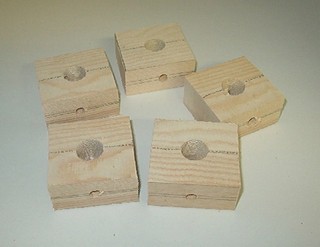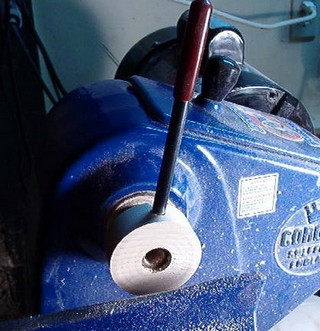One of the recent topics on the rec.crafts.woodturning news group has been the idea of using a metal tap for threading wood so as to make a faceplate for the lathe. I like to do this for the making of glue blocks in particular. It frees up a faceplate and lets me reach in a drawer for a glue block and start to work. Also, If I wish to pause in the work for a while, I can leave the piece on the glue block and use the regular faceplate for whatever needs doing. While a faceplate could be used with a glue block screwed to it, the faceplate costs money and the glue block costs scrap wood and a bit of glue. Here I am making blocks for a lathe with 3/4 x 16 threads. For a larger lathe spindle, use a reasonably wider board.

Making a Threaded Wooden Glue Block
It is an easy thing to thread a glue block to fit your wood lathe and then it can become a replacement in many situations for a faceplate at almost no cost.
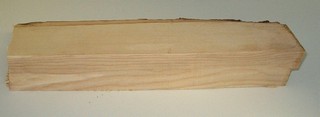
I start with a slab of maple or other hard wood about 1/ 1/4" thick and 2 to 2 ½" wide. Here I am using a piece of ash about 3" thick which I will take to the band saw and get two pieces, one for nuts and one for glue blocks.

It is easier to use and to see what I am doing after I run it through the planer. This is not necessary, but nice.
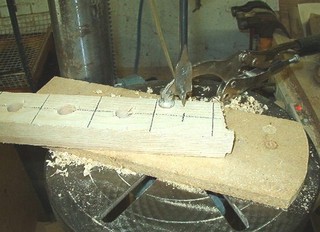
I mark it into squares and mark the center of each square. Exact measurements are not critical, the glue block will arrange itself as we go. I use a spade bit to drill the appropriately sized hole for the tap, here 11/16".
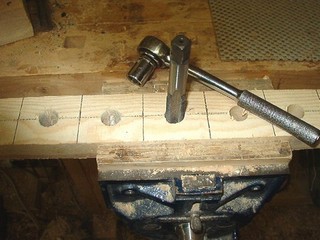
Once the holes are drilled I hold the board in my bench vise to tap the holes. You can see the holes on the left are tapped, the ones on the right wait, and I am busy at center. Tapping the hole is a lot like driving a lag bolt with a wrench. The tap scrapes its way through the hole, making threads as it goes. Take your time. You get a cleaner cut and the tap has to work hard. Once in a while, back the tap up a bit to clear the shavings and then proceed with the tapping.
Now it is decision time; to wait or not to wait. As you have noticed in your turning, wood moves. Even assuming the stock used was dry, it will likely move a bit. I set the wood aside for a few days or until I need it or get to it, and then retap. No need to redrill, just run the tap through the wood in case it has moved
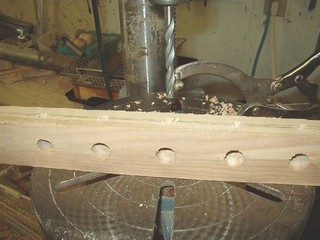
In the face grain, not the side grain, on each block I drill a shallow 5/16" hole. This fits the rods for my One Way chuck and aids in later removal of the block from the lathe. (If you do not have such a rod handy, cut the head off a 5/16" bolt, turn a handle for it and stick the two together.).
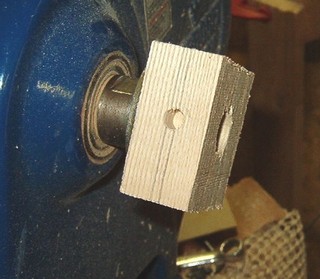
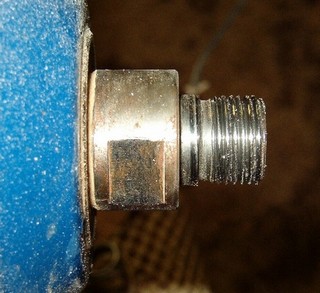
I use a washer behind the block and mount it to the lathe. Just screw it on. The lathe here is my Record bowl lathe. As you notice the spindle has threads followed by a slightly lesser diameter straight piece and then a face for the block to register onto. The latter part of that section is the same in size as the outer radius of the threads and will jam on the nut. This is a common situation and we will take care of this in the turning.
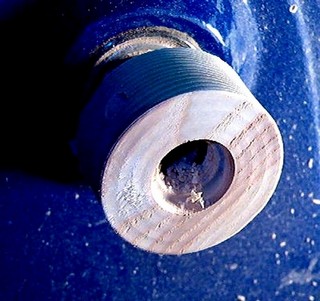
Turn the block round and flatten the face. This will be the face that buts against the lathe head stock and needs to be well flattened. Once it has been turned, use your tool to cut a rabbet around the opening so as to clear the unthreaded portion of the spindle when the piece is reversed.
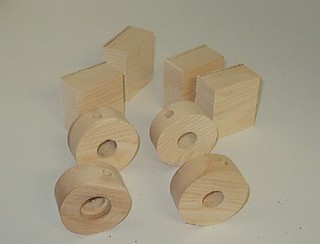
Reverse the piece on the lathe and flatten the other side. Here are four pieces threaded and flattened on both sides. The fifth had a split I found while turning it so it became scrap wood again. Along with nuts are four pieces of scrap each about 2 1/4" square and flat on one side. Flatten them with a plane or sander or whatever. I recommend using hard wood of some kind, usually whatever is in the scrap box is fine.
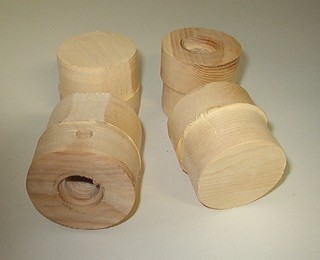
I glue these to the nuts with yellow glue, let dry over night and then mount to the lathe, round the glue block and flatten the end.
In use I use hot glue to hold a roughed and dried bowl or vase to the glue block. Once the piece is turned and parted, I flatten the face of the block to use it again. When I wear close to the nut I flatten the face and glue on more scrap. I have several face plates but if I wanted extras I would start with a 3" or 4" piece of maple about 1 1/4" thick and make it into a nut. Drilling 3 to 5 1/4" holes around it about ½" from the rim turns it into a face plate. Use 1/4" lag bolts or #14 self tapping sheet metal screws long enough to penetrate at least ½" into the piece.
